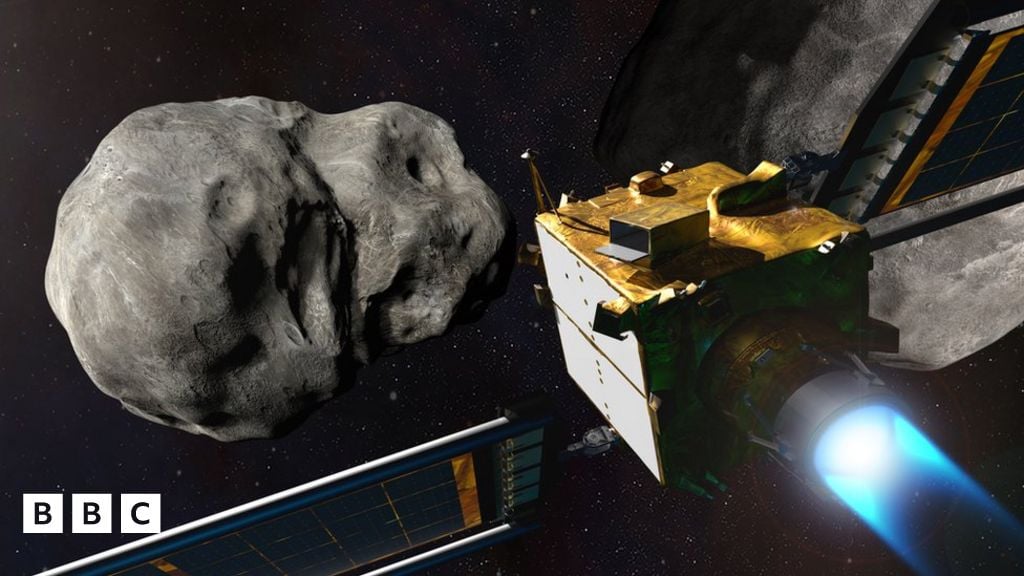- cross-posted to:
- space@lemmy.world
- cross-posted to:
- space@lemmy.world
Asteroid behaving unexpectedly after Nasa’s deliberate Dart crash::A school teacher and his students have discovered that an asteroid deliberately hit by a Nasa spacecraft is behaving in a weird way.
…heard on the TV in the background while the main character is leaving the house.
Man, there is a xkcd for everything …
One of their neighbours has to be erratically throwing their family and stuff into the car, awkwardly saying hey to the main character as they jump in their car and speed off.
The summary bot didn’t even list the odd behavior. It has continued to decelerate a month after impact. Find that a bit unusual and counterintuitive to newton’s laws. But I’m not a physicist.
It’s slowing down to look for the fucker that sucker punched him lol
It was an alien ship with camouflage and they ain’t happy.
It appears to be slowing down. That means it’s either generating thrust (outgassing etc), still being impacted by debris, or their measurements have been thrown off by something. All would be interesting, in their own way.
Somewhere a dev in the real world is scrambling to fix the bug in the simulation’s physics engine.
I guess they broke their engine! /s
So did NASA not track the asteroid for the last year? Like they just crash a rocket into it and call it good right away? No follow up or deeper analysis? You’d think they would want to monitor it for any weird or unexpected behavior but instead they find out from a high school teacher?
People still think
tachyonsneutrinos move faster than light because a professional laboratory gathered data incorrectly one time… I’m not saying these high schoolers messed up their data collection, but it seems more likely than them discovering a new physical phenomenonBut tachyons are by definitions just “hypothetical particles moving faster than light”. Meaning if they exist, of course they move faster than light. I don’t know which lab your talking about, but people are absolutely right to think that tachyons are faster than light (if they believe tachyons to exist, which of course never has been proven).
Maybe you have the wrong word here and that people think that neutrinos can move faster than light, since there was a false measurement in CERN? But that one has been reported and updated already.
Fun fact: particles that move slower than light (i.e. all known particles with mass) are called tardyons.
Wow, TIL
The teams behind the DART mission are tracking it, and will continue to track it into the future. There is even a new mission set to launch to send another craft to the asteroid to gather more information. So, yeah lots of follow up to come over the next year. It is just far more likely that they don’t really have much to say ATM aside from well, that is not acting as predicted, we need more evidence/data to figure out what exactly is going on. Which is what this students paper basically concluded.
https://phys.org/news/2023-09-dart-impact.html gives a far better overview of the situation than the BBC article linked above.
NASA is run by the federal government. It would make sense that they wouldn’t report something like that, at least at this time, in order to avoid an overreaction by the public.
This is the best summary I could come up with:
However, a teacher and his class studying the rock have now discovered that since the collision, it has moved in a strange and unexpected way.
By crashing into the smaller asteroid, the Dart mission successfully altered Dimorphos’ orbit by “tens of metres”.
Dart, which stands for Double Asteroid Redirection Test, used a spacecraft around the size of a fridge.
By successfully crashing directly into Dimorphos, Nasa was testing if it could use similar methods to knock an asteroid off course, if one is in danger of hitting the Earth.
After discovering the unusual behaviour of Dimorphos, it’s likely that Nasa will have to factor in the high school’s findings, if they ever launch another asteroid redirection mission in the future.
The European Space Agency is launching a mission called Hera, which will arrive at Dimorphos in 2026 and could reveal more details as to what happened to the asteroid following the impact.
The original article contains 360 words, the summary contains 152 words. Saved 58%. I’m a bot and I’m open source!
To be fair, it’s like playing billiards with a rope for a cue, in 3 dimensions, in zero gravity, with rocks for balls, and a coke can for the white, and the balls are moving.
I’m surprised they even hit it, give them a few years before you start expecting them to do trickshots.
We woke it up
deleted by creator
deleted by creator








